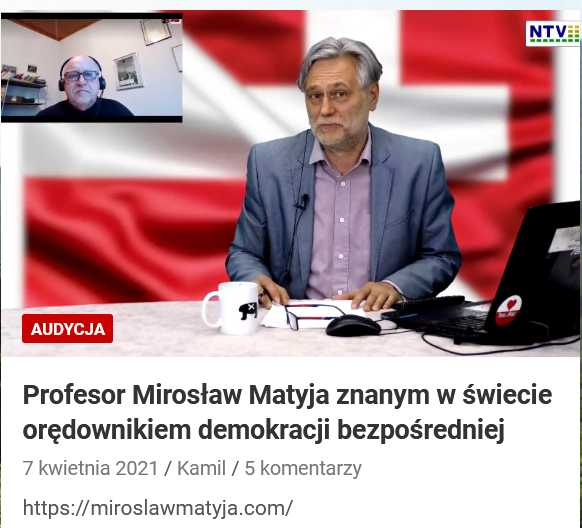A Critical Assesment of Marketing Strategies that Attract Visitors to Heritages Destination of Indonesia
Abstract
This research aims to review from previous literature about heritage marketing, to analyze an effective marketing strategies that attract visitors to visit heritage sites in Indonesia, and offers recommendations of marketing strategies to less popular heritage destinations in Indonesia. This study uses a quantitative approach. This research has a pretty wide range of target population, on the very least are people aged above 16 who ever travel or aware of tourism activity. The Google Forms questionnaire was distributed via media social network and direct e-mail on 4th March 2021. After the research is conducted, the collected raw data need to be process by mean to make it understandable which include converting it to an easier to understand forms such as pie chart, table, etc. To do that, SPSS and Microsoft Excel are used to process the raw data. We find that the awareness on Indonesia heritage tourism is still in moderate level, leaving plenty of room for promotion activities to increase awareness. Pull factors such as the attractiveness of the destination, on-going event within the tourism location, and the culture present in the destination are the major considerations in tourist travel decision to visit heritage site. Promoting the heritage site’s authenticity is considered an effective marketing strategy as it will be an addition of pull factor to influence tourist visit. UNESCO’s World Heritage Site title is approved to be used as a value-added branding for heritage destination. There are certain perceptions that Indonesia heritage tourism attractions are currently branded or associated which in descending order are: tropical setting, flora & fauna, foods, and low cost. Further maximizing these affiliated perceptions will potentially increase the market position of Indonesia heritage tourism.
Keywords
Full Text:
PDFReferences
Abbas, Z., Javed, M., Gulzar, S., & Hussain, K. (2020). Business Cycles - more than Economic Phenomena (Issue December).
Adie, B. A. (2017). Franchising our heritage: The UNESCO World Heritage brand. Tourism Management Perspectives, 24, 48–53. https://doi.org/10.1016/j.tmp.2017.07.002
Ahmad, Y. (2006). The scope and definitions of heritage: From tangible to intangible. International Journal of Heritage Studies, 12(3), 292–300. https://doi.org/10.1080/13527250600604639
Alrawadieh, Z., Prayag, G., Alrawadieh, Z., & Alsalameen, M. (2019). Self-identification with a heritage tourism site, visitors’ engagement and destination loyalty: the mediating effects of overall satisfaction. Service Industries Journal, 39(7–8), 541–558. https://doi.org/10.1080/02642069.2018.1564284
Arora, N., Dreze, X., Ghose, A., Hess, J. D., Iyengar, R., Jing, B., Joshi, Y., Kumar, V., Lurie, N., Neslin, S., Sajeesh, S., Su, M., Syam, N., Thomas, J., & Zhang, Z. J. (2008). Putting one-to-one marketing to work: Personalization, customization, and choice. Marketing Letters, 19(3–4), 305–321. https://doi.org/10.1007/s11002-008-9056-z
Austin, N. K. (2002). Managing heritage attractions: marketing challenges at sensitive historical sites. International Journal of Tourism Research, 4(6), 447–457. https://doi.org/10.1002/jtr.403
Biggins, R. M. (2016). Marketing heritage tourism destinations : community and commercial representations of the past. July.
Binney, W., Hall, J., & Oppenheim, P. (2006). The nature and influence of motivation within the MOA framework: implications for social marketing. International Journal of Nonprofit and Voluntary Sector Marketing, 11(4), 289–301. https://doi.org/10.1002/nvsm.280
Blackett, T., & Boad, B. (1999). Co-Branding: The Science of Alliance, Macmillan Business.
Bornhorst, T., Brent Ritchie, J. R., & Sheehan, L. (2010). Determinants of tourism success for DMOs & destinations: An empirical examination of stakeholders’ perspectives. Tourism Management, 31(5), 572–589. https://doi.org/10.1016/j.tourman.2009.06.008
Bouchenaki, M. (2003). The interdependency of the tangible and intangible cultural heritage. ICOMOS 14th General Assembly and Scientific Symposium (October 27-31, 2003), 1–5.
Brodie, R. J., Benson-Rea, M., & Medlin, C. J. (2017). Branding as a dynamic capability: Strategic advantage from integrating meanings with identification. Marketing Theory, 17(2), 183–199. https://doi.org/10.1177/1470593116679871
Brown, S., & Campelo, A. (2014). Do Cities Have Broad Shoulders? Does Motown Need a Haircut? On Urban Branding and the Personification of Place. Journal of Macromarketing, 34(4), 421–434. https://doi.org/10.1177/0276146714523293
Caldwell, M., & Henry, P. C. (2020). How cultural branding, story-telling, and personification can save the iconic Australian koala. Psychology and Marketing, 37(12), 1781–1789. https://doi.org/10.1002/mar.21428
Cerquetti, M., & Ferrara, C. (2018). Marketing research for cultural heritage conservation and sustainability: Lessons from the field. Sustainability (Switzerland), 10(3). https://doi.org/10.3390/su10030774
Chatzigeorgiou, Chryssoula; Christou, E. (2020). Adoption of social media as distribution channels in tourism marketing: A qualitative analysis of consumers’ experiences. Journal of Tourism, Heritage & Services Marketing, 6(1), 25–32.
Chen, K.-J., Lin, J.-S., Choi, J. H., & Hahm, J. M. (2015). Would You Be My Friend? An Examination of Global Marketers’ Brand Personification Strategies in Social Media. Journal of Interactive Advertising, 15(2), 97–110. https://doi.org/10.1080/15252019.2015.1079508
Chiambaretto, P., Gurău, C., & Le Roy, F. (2016). Coopetitive branding: Definition, typology, benefits and risks. Industrial Marketing Management, 57(July), 86–96. https://doi.org/10.1016/j.indmarman.2016.05.009
Cho, M., Bonn, M. A., & Brymer, R. A. (2017). A Constraint-Based Approach to Wine Tourism Market Segmentation. Journal of Hospitality and Tourism Research, 41(4), 415–444. https://doi.org/10.1177/1096348014538049
Choi, J., Ok, C. (Michael), & Choi, S. (2016). Outcomes of Destination Marketing Organization Website Navigation: The Role of Telepresence. Journal of Travel and Tourism Marketing, 33(1), 46–62. https://doi.org/10.1080/10548408.2015.1024913
Dahana, W. D., Miwa, Y., Baumann, C., & Morisada, M. (2020). Relative importance of motivation, store patronage, and marketing efforts in driving cross-buying behaviors. Journal of Strategic Marketing, 00(00), 1–29. https://doi.org/10.1080/0965254X.2020.1811997
Davies, G. (2008). Employer branding and its influence on managers. European Journal of Marketing, 42(5–6), 667–681. https://doi.org/10.1108/03090560810862570
Davis, S. (2002). Brand Asset Management 2: How businesses can profit from the power of brand. Journal of Consumer Marketing, 19(4), 351–358. https://doi.org/10.1108/07363760210433654
de la Hoz-Correa, A., Muñoz-Leiva, F., & Bakucz, M. (2018). Past themes and future trends in medical tourism research: A co-word analysis. Tourism Management, 65, 200–211. https://doi.org/10.1016/j.tourman.2017.10.001
de Streel, A., & Sibony, A.-L. (2017). Towards Smarter Consumer Protection Rules for the Digital Society. SSRN Electronic Journal, October. https://doi.org/10.2139/ssrn.3063192
Dhanesh, G. S., & Duthler, G. (2019). Relationship management through social media influencers: Effects of followers’ awareness of paid endorsement. Public Relations Review, 45(3), 1–13. https://doi.org/10.1016/j.pubrev.2019.03.002
Fitri, I., Ahmad, Y., & Ahmad, F. (2015). Conservation of Tangible Cultural Heritage in Indonesia: A Review Current National Criteria for Assessing Heritage Value. Procedia - Social and Behavioral Sciences, 184(August 2014), 71–78. https://doi.org/10.1016/j.sbspro.2015.05.055
Forgacs, G. (2003). Brand asset equilibrium in hotel management. International Journal of Contemporary Hospitality Management, 15(6), 340–342. https://doi.org/10.1108/09596110310488203
Fyall, A., Garrod, B., Leask, A., & Stephen, W. (2008). Managing Visitor Attractions. https://doi.org/10.1079/9781780640228.0272
Garrod, B., & Fyall, A. (2017). Managing heritage tourism. Managing Heritage and Cultural Tourism Resources: Critical Essays, Volume One, 27(3), 151–178. https://doi.org/10.4324/9781315249933-18
Grönroos, C. (2006). On defining marketing: Finding a new roadmap for marketing. Marketing Theory, 6(4), 395–417. https://doi.org/10.1177/1470593106069930
Gummesson, E. (1987). The New Marketing Long-term Interactive Relationships Developing Evert Gummesson Current Approaches to Marketing. Pergamon Journal Ltd, 20(4), 10–20.
Gupta, S., Melewar, T. C., & Bourlakis, M. (2010). A relational insight of brand personification in business-to-business markets. Journal of General Management, 35.
Hakim, M.A.A., Suryantoro, A., and Rahardjo, M. (2021). Analysis of the Influence of Tourism Growth on Economic Growth and Human Development Index in West Java Province 2012-2018. Budapest International Research and Critics Institute-Journal (BIRCI-Journal) Vol 4 (1): 160-169.
Harrison, R. (20 C.E.). What is heritage? https://doi.org/10.4324/9781003000112-3
Hartwell, H., Appleton, K. M., Bray, J., Price, S., Mavridis, I., Giboreau, A., Perez-Cueto, F. J. A., & Ronge, M. (2019). Shaping smarter consumer food choices: The FoodSMART project. Nutrition Bulletin, 44(2), 138–144. https://doi.org/10.1111/nbu.12376
Harvey, D. C. (2018). Heritage pasts and heritage presents: Temporality, meaning and the scope of heritage studies. A Museum Studies Approach to Heritage, 14–28.
Hashimoto, A., & Telfer, D. J. (2006). Selling Canadian culinary tourism: Branding the global and the regional product. Tourism Geographies, 8(1), 31–55. https://doi.org/10.1080/14616680500392465
Heslop, L. A., Nadeau, J., O’Reilly, N., & Armenakyan, A. (2013). Mega-event and country co-branding: Image shifts, transfers and reputational impacts. Corporate Reputation Review, 16(1), 7–33. https://doi.org/10.1057/crr.2012.23
Hitchcock, M., & Darma Putra, N. I. (2015). Prambanan and Borobudur: Managing Tourism and Conservation in Indonesia.
Hoffman, D. L., & Novak, T. P. (1997). A new marketing paradigm for electronic commerce. Information Society, 13(1), 43–54. https://doi.org/10.1080/019722497129278
Högberg, A., Holtorf, C., May, S., & Wollentz, G. (2017). No future in archaeological heritage management? World Archaeology, 49(5), 639–647. https://doi.org/10.1080/00438243.2017.1406398
Järlehed, J. (2020). Alphabet city: orthographic differentiation and branding in late capitalist cities. Social Semiotics. https://doi.org/10.1080/10350330.2020.1810547
Jevons, C. (2005). Names, brands, branding: Beyond the signs, symbols, products and services. Journal of Product and Brand Management, 14(2), 117–118. https://doi.org/10.1108/10610420510592590
Kay, P. (2007). Consumer Motivation in a Tourism Context: Continuing the Work of Maslow, Rokeach, Vroom, Deci, Haley and Others. Ethos, 15(3), 15–18.
Kolar, T., & Zabkar, V. (2010). A consumer-based model of authenticity: An oxymoron or the foundation of cultural heritage marketing? Tourism Management, 31(5), 652–664. https://doi.org/10.1016/j.tourman.2009.07.010
Kotler, P., & Levy, S. J. (1969). Broadening the concept of marketing. Journal of Marketing, 33(1), 10–15. https://doi.org/10.2307/1248740
Kotler, Philip. (1989). From mass marketing to mass customization.
Landgraf, J. M., Maunsell, E., Nixon Speechley, K., Bullinger, M., Campbell, S., Abetz, L., & Ware, J. E. (1998). Canadian-French, German and UK versions of the child health questionnaire: Methodology and preliminary item scaling results. Quality of Life Research, 7(5), 433–445. https://doi.org/10.1023/A:1008810004694
Lee, H. J., & Jee, Y. (2016). The impacts of brand asset of domestic screen golf playing systems upon brand trust and brand loyalty. International Journal of Sports Marketing and Sponsorship, 17(4), 320–332. https://doi.org/10.1108/IJSMS-11-2016-021
Letheren, K., Martin, B. A. S., & Jin, H. S. (2017). Effects of personification and anthropomorphic tendency on destination attitude and travel intentions. Tourism Management, 62, 65–75. https://doi.org/10.1016/j.tourman.2017.03.020
Lwoga, N. B., & Maturo, E. (2020). Motivation-based segmentation of rural tourism market in African villages. Development Southern Africa, 37(5), 773–790. https://doi.org/10.1080/0376835X.2020.1760791
Mchone, W. W., & Rungeling, B. (2000). Practical Issues in Measuring the Impact of a Cultural Tourist Event in a Major Tourist Destination. Journal of Travel Research, 38(3), 300–303. https://doi.org/10.1177/004728750003800313
Melewar, T., Small, J., Whitelock, J., & Fastoso, F. (2007). Understanding international branding: Defining the domain and reviewing the literature. International Marketing Review, 24(3), 252–270. https://doi.org/10.1108/02651330710755285
Menayang, A. P., & Marta, R. F. (2020). Branding of North Sulawesi tourism through the hexagon of competitive identity. Jurnal Studi Komunikasi (Indonesian Journal of Communications Studies), 4(2), 410. https://doi.org/10.25139/jsk.v4i2.2474
Montgomery, A. L., & Smith, M. D. (2009). Prospects for Personalization on the Internet. Journal of Interactive Marketing, 23(2), 130–137. https://doi.org/10.1016/j.intmar.2009.02.001
Moorthi, Y. L. R. (2000). An Approach to Branding Services. October.
Munjeri, D. (2004). Tangible and intangible heritage: From difference to convergence. Museum International, 56(1–2), 12–20. https://doi.org/10.1111/j.1350-0775.2004.00453.x
Nascimento, L., Steinbruch, F., Oliveira, D., Costa, J., & Bins Luce, F. (2020). Breaking Down the Strategic Marketing: Three Approaches for Compensatory or Transformative Social Enterprises. SSRN Electronic Journal, September. https://doi.org/10.2139/ssrn.3685189
Nasution, S., Sinulingga, S., and Sufika, A. (2021). Perception of Country Tourism on Tourism Quality in Lake Toba North Sumatera 2020. Budapest International Research and Critics Institute-Journal (BIRCI-Journal) Vol 4 (1): 180-188.
Ndoro, W., Mumma, A., & Abungu, G. (2008). Cultural Heritage and the Law Protecting Immovable Heritage in English-Speaking Countries of Sub-Saharan Africa. In AICCM Bulletin (Vol. 12, Issues 1–2). https://doi.org/10.1179/bac.1986.12.1-2.010
Ofosu-Boateng, I. (2020). “Influence of Consumer Sales Promotion on Consumers’ Purchasing Behaviour of the Retailing of Consumer Goods in Tema, Ghana”. Journal of Marketing Management (JMM), 8(1), 24–36. https://doi.org/10.15640/jmm.v8n1a4
Park, S.-Y., & Vargo, S. L. (2012). The Service-Dominant Logic Approach to Tourism Marketing Strategy.
Pascoal, A. M., Teixeira, C., & Lourenco, M. C. (2011). The University of Lisbon’s cultural heritage survey. Umacj, 5.
Pennington, J. W., & Thomsen, R. C. (2010). A semiotic model of destination representations applied to cultural and heritage tourism marketing. Scandinavian Journal of Hospitality and Tourism, 10(1), 33–53. https://doi.org/10.1080/15022250903561895
Poria, Y., Butler, R., & Airey, D. (2004). Links between tourists, heritage, and reasons for visiting heritage sites. Journal of Travel Research, 43(1), 19–28. https://doi.org/10.1177/0047287504265508
Poria, Y., Reichel, A., & Cohen, R. (2011). World heritage site-is it an effective brand name? A case study of a religious heritage site. Journal of Travel Research, 50(5), 482–495. https://doi.org/10.1177/0047287510379158
Poria, Y., Reichel, A., & Cohen, R. (2013). Tourists perceptions of World Heritage Site and its designation. Tourism Management, 35, 272–274. https://doi.org/10.1016/j.tourman.2012.02.011
Rahnama, R., & Beiki, A. H. (2013). Modern Marketing, Concepts and Challenges. Oman Chapter of Arabian Journal of Business and Management Review, 2(6), 143–155. https://doi.org/10.12816/0002302
Robinson, P., Heirmann, S., & Dieke, P. (2011). Research Themes for Tourism. https://doi.org/10.1108/09596111211247263
Rooney, J. A. (1995). Branding: A trend for today and tomorrow. Journal of Product & Brand Management, 4(4), 48–55. https://doi.org/10.1108/10610429510097690
Roper, S., & Parker, C. (2006). Evolution of Branding Theory and Its Relevance to the Independent Retail Sector. The Marketing Review, 6(1), 55–71. https://doi.org/10.1362/146934706776861555
Ryan, J., & Silvanto, S. (2011). A brand for all the nations: The development of the World Heritage Brand in emerging markets. Marketing Intelligence and Planning, 29(3), 305–318. https://doi.org/10.1108/02634501111129266
Saunders, M., Lewis, P., & Thornhill, A. (2009). Research Methods for Business Students (5th ed.). Pearson.
Scorrano, P., Fait, M., Maizza, A., & Vrontis, D. (2019). Online branding strategy for wine tourism competitiveness. International Journal of Wine Business Research, 31(2), 130–150. https://doi.org/10.1108/IJWBR-06-2017-0043
Sharpley, R. (2000). Tourism and sustainable development: Exploring the theoretical divide. Journal of Sustainable Tourism, 8(1), 1–19. https://doi.org/10.1080/09669580008667346
Shih, D. (1986). VALS as a Tool of Tourism Market Research: The Pennsylvania Experience. Journal of Travel Research, 24(4), 2–11. https://doi.org/10.1177/004728758602400401
Šimková, E., & Holzner, J. (2014). Motivation of Tourism Participants. Procedia - Social and Behavioral Sciences, 159(1981), 660–664. https://doi.org/10.1016/j.sbspro.2014.12.455
Sinulingga, S. (2021). Tourism & Covid-19 (Coronavirus Impact Inventory to Tourism Stakeholders in North Sumatera). Budapest International Research and Critics Institute-Journal (BIRCI-Journal) Vol 4 (1): 170-179.
Smith, L. (2015). Intangible heritage: a challenge to the authorised heritage discourse? Revista d’etnologia de Catalunya, 0(40), 133–142.
Soedjatmiko. (2015). Sports Tourism Development in Indonesia. Journal of Sports Science, 3(5). https://doi.org/10.17265/2332-7839/2015.08.009
Soteriades, M. (2012). Tourism destination marketing: Approaches improving effectiveness and efficiency. Journal of Hospitality and Tourism Technology, 3(2), 107–120. https://doi.org/10.1108/17579881211248781
Steinberg, F. (1996). Conservation and rehabilitation of urban heritage in developing countries. Habitat International, 20(3), 463–475. https://doi.org/10.1016/0197-3975 (96)00012-4
Swiss Confederation. (2018). Switzerland implements the 2030 Agenda for Sustainable Development.
Tellström, R., Gustafsson, I.-B., & Mossberg, L. (2006). Consuming heritage: The use of local food culture in branding. Place Branding, 2(2), 130–143. https://doi.org/10.1057/palgrave.pb.5990051
Thirumaran, K. (2013). Managing Graffiti at Tourist Attractions. Proceedings of the International Conference on Managing the Asian Century, 575–581. https://doi.org/10.1007/978-981-4560-61-0
Thomas, A. R. (2007). The end of mass marketing: Or, why all successful marketing is now direct marketing. Direct Marketing: An International Journal, 1(1), 6–16. https://doi.org/10.1108/17505930710734107
Thompson, C. J., Rindfleisch, A., & Arsel, Z. (2006). Emotional and the Branding Value of the Doppelganger Strategic Brand. Journal of Marketing, 70(1), 50–64.
Tikkanen, I. (2007). Maslow’s hierarchy and food tourism in Finland: Five cases. British Food Journal, 109(9), 721–734. https://doi.org/10.1108/00070700710780698
Trimurti, C. P., & Utama, I. G. B. R. (2020). The examination Bali destination marketing chain model based on tourist motivation. International Journal of Scientific and Technology Research, 9(3), 4491–4495.
Troy, L., & Cunningham, P. (2002). Brand Asset Management.
Tulung, J. E., & Ramdani, D. (2018). Independence, size and performance of the board: An emerging market research. Corporate Ownership and Control, 15(2–1), 201–208. https://doi.org/10.22495/cocv15i2c1p6
Veldpaus, L., Pereira Roders, A. R., & Colenbrander, B. J. F. (2013). Urban Heritage: Putting the Past into the Future. The Historic Environment: Policy & Practice, 4(1), 3–18. https://doi.org/10.1179/1756750513z.00000000022
Waterton, E., & Watson, S. (2015). The Palgrave Handbook of Contemporary Heritage Research.
Weeden, C. (2002). Ethical tourism: An opportunity for competitive advantage? Journal of Vacation Marketing, 8(2), 141–153. https://doi.org/10.1177/135676670200800204
Wood, L. (2000). Brands and brand equity: definition and management. Management Decision, 38(9), 662–669. https://doi.org/10.1108/00251740010379100
Zouganeli, S., Trihas, N., Antonaki, M., & Kladou, S. (2012). Aspects of Sustainability in the Destination Branding Process: A Bottom-up Approach. Journal of Hospitality Marketing and Management, 21(7), 739–757. https://doi.org/10.1080/19368623.2012.624299
DOI: https://doi.org/10.33258/birci.v5i1.3823
Article Metrics
Abstract view : 158 timesPDF - 46 times
Refbacks
- There are currently no refbacks.

This work is licensed under a Creative Commons Attribution-ShareAlike 4.0 International License.

This work is licensed under a Creative Commons Attribution-ShareAlike 4.0 International License.

_.gif)

















_.gif)



